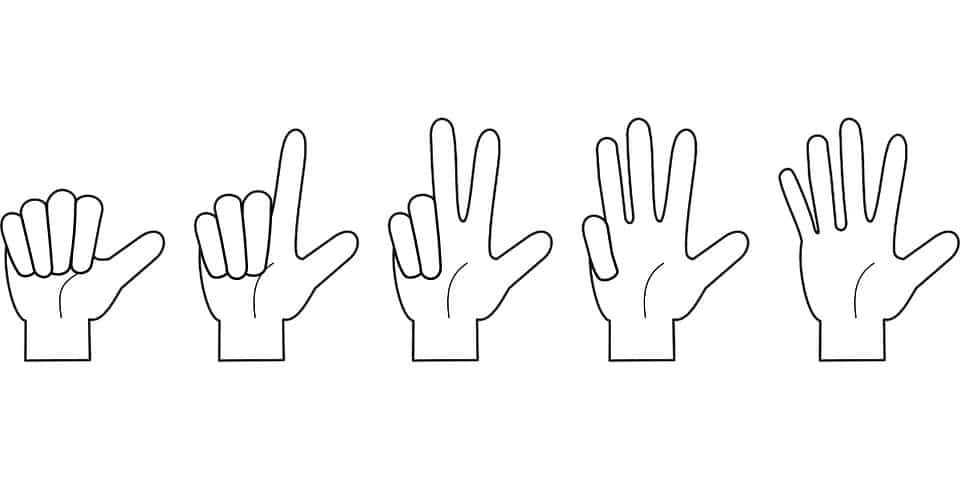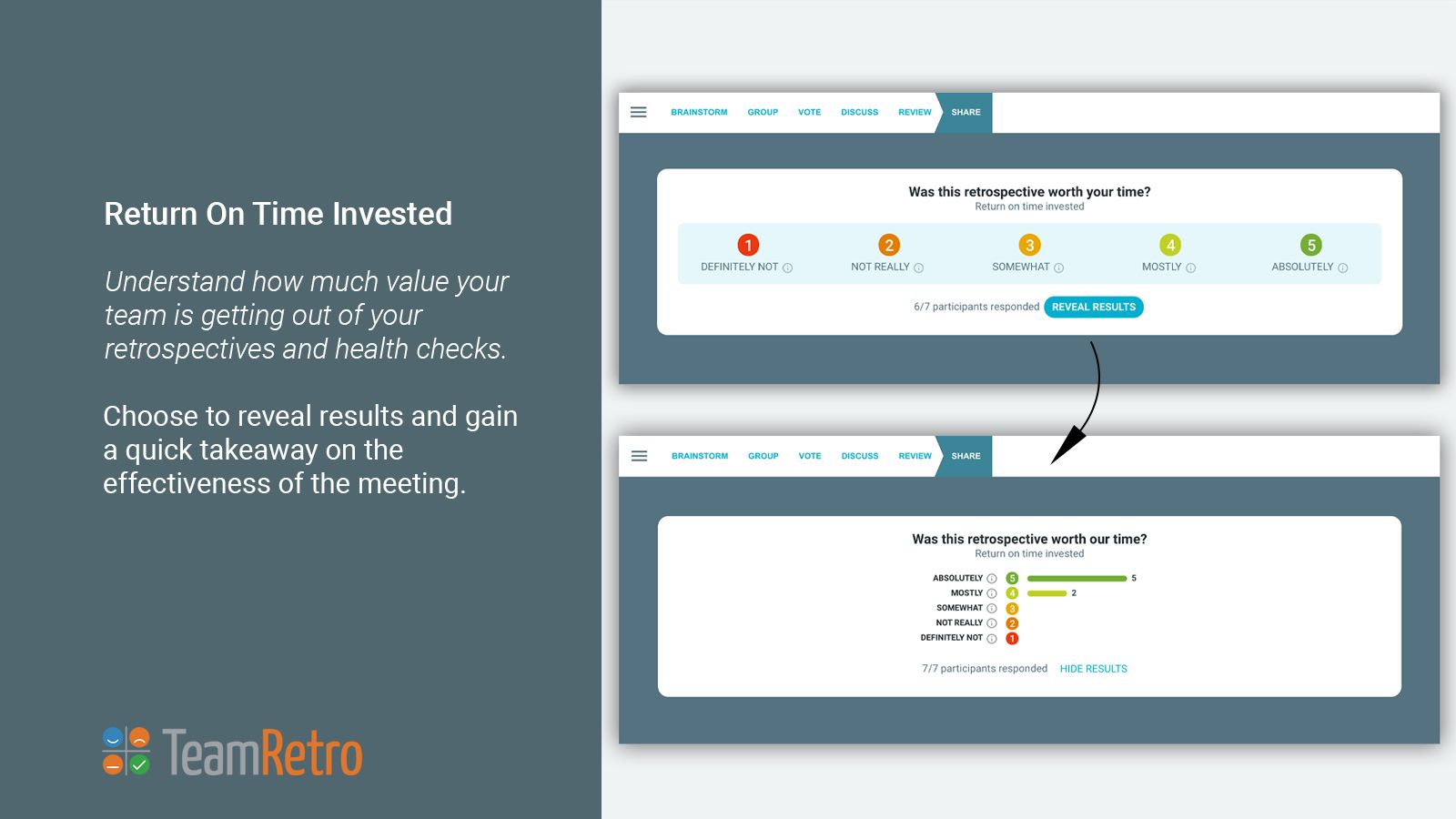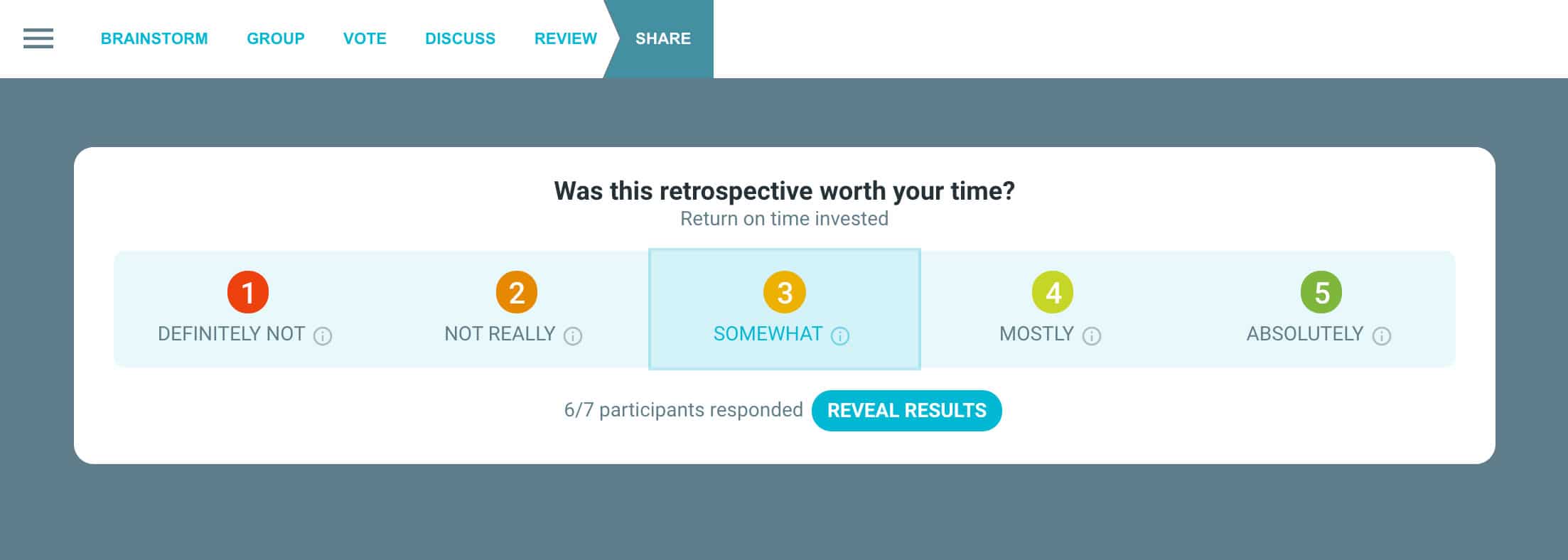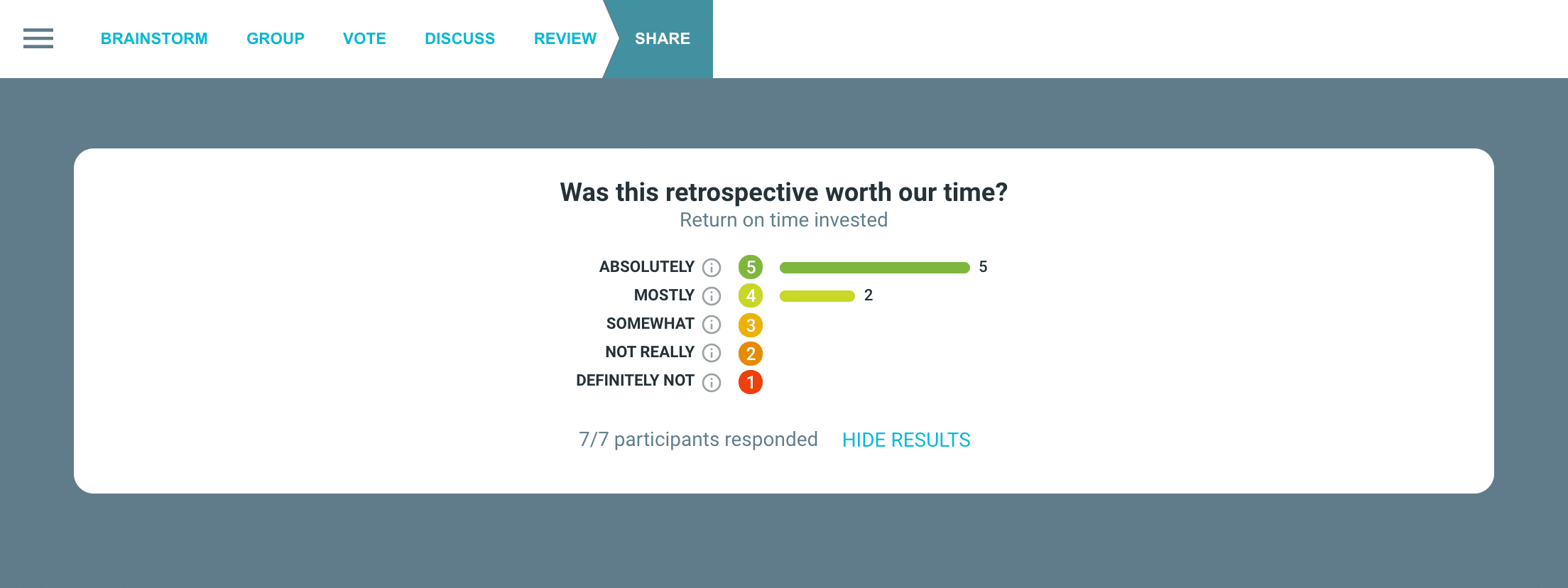We all value our time and the meetings we attend can either be a positive or negative use of that time. Irrespective of whether our meetings are face to face or online with our teams, the time we spend in them can leave us with a sense of whether or not the meeting was worthwhile. The Return on Time Invested, or ROTI for short as suggested by Esther Derby is a great way to help teams discover how much value is coming out of those meetings.

What is the Return on Time Invested (ROTI) in Agile Retrospectives?
A ROTI is an easy way of gauging how much value each meeting participant perceives their meeting delivered. Just prior to the close of the meeting, attendees are invited to rate their experience using a simple 1-5 rating method to assess whether they feel that the time they spent in the meeting was worthwhile.
Just as icebreakers are a great way to open meetings, ROTI’s are a great way to close them; they help wrap up the session and draw focus on what could be done better next time.
Generally, it’s best to give participants the opportunity to provide their response anonymously and independently, as this creates a psychologically safe space in which they are more likely to be honest and their feedback is less likely to be influenced by others.

Why should we rate the ROTI for our retros?
Rating your meeting’s ROTI allows you to monitor meeting effectiveness and value.
Time, whether spent or borrowed, is a valuable commodity; it can therefore be frustrating for team members if they feel the time they spend on their retrospectives could be better directed elsewhere – especially when retrospectives are a core practice of agile methodology!
Rating a meeting’s ROTI gives each team member a platform to offer their opinion on the value of the meeting and present ways to improve it. Team members are therefore given a voice and contribute to the continuous improvement of their retrospectives and health checks. This empowers the team and helps them feel more engaged in the current and future meetings creating greater participation and buy-in.
The rating of a meeting’s ROTI provides Scrum Masters with feedback they may otherwise have missed. That in of itself is a great reason to find out your meeting ROTI.
How do we rate the ROTI of the agile meeting?
TeamRetro offers you the choice to add a ROTI poll at the end of your retrospective or health check.
Each person evaluates the ‘Return’ on their own ‘Time Invested’ in the agile retrospective or health check on a scale of 1 to 5 by responding to a simple question.
Was this retrospective worth your time?
1. Definitely not. A waste of my time.
2. Not really. Useful, but not worth all of time.
3. Somewhat. I gained enough to spend my time on it.
4. Mostly. I gained more value than the time spent on it.
5. Absolutely. I gained a lot of value and it was absolutely worth my time.
Scrum master tips for using the ROTI
How do team members rate the ROTI of the meeting?
The value that each team member gets out of their agile retrospective or health check will vary from meeting to meeting but there are few decision criteria that can guide the rating.
Information sharing
Value can be obtained by receiving answers to questions or hearing information that can help you move forward with a task, avoid rework, improve the way you work or overcome an obstacle.
Decision making
There may have been a person, process or piece of information that was blocking progress so having this at the meeting can help move the needle in making a decision.
Problem solving
If the meeting highlights, addresses or explores options around improving the meeting, then there can be a clear sign of value.
Work Planning
Prioritising, re-prioritising or even redefining future work may seem like a non-productive exercise but is a value adding activity if it can create alignment, focus and direction.
Team building and agreements
An often neglected aspect of work meetings is building rapport, communication and team spirit. The value may not be as extrinsic as an output or artefact, but more intrinsic in terms of agreeing on the way the team works together.
How can you introduce ROTI to your agile team?
Here are a couple of key messages worth sharing with the team when introducing ROTI.
- The ROTI is independent and anonymous. Be honest about what value you obtained.
- Results are not tracked. It should reflect the time and space of the meeting rather than an ideal score.
- Ratings should be sincere, fair and honest. This is your opportunity to share now.
- The goal is for continuous improvement rather than using it to pinpoint individuals, create blame, or criticize.
- Use a future-based statement such as, In future meetings, I would get more value if we did X.
As the Scrum Master, you can help guide the quality of the ROTI by saying something like…
How do I use ROTI to improve meeting effectiveness?
The results from the team signal the overall perceived value that the group gained from the meeting. Of course this will vary from meeting to meeting depending on the content and relevance, but in any case, the goal is to explore ways to improve the facilitation and meeting outcome process.
Let’s say scores are in the 4’s and 5’s…
Congrats! This meeting sounds like a resonating success. It may have been the meeting design, the content, the quality of facilitation or all of the above.
Let’s say there are a few 2’s and 3’s…
Okay, there was still some value gained, but certainly not on the positive side. What could we do to improve our ratings?
Let’s say there are a few 1’s…
Don’t worry! This doesn’t mean that you have done a poor job. It could have simply been that someone did not care about the topic or whose job was not impacted by it.
Closing off retrospectives… and this article.
Ready to do a Return on Time Invested with your team? Add it to your TeamRetro retrospective meeting or team health check and it will be displayed at the end of the meeting. You can capture the feedback and reveal the results in real-time or you can review the results later.
Get started with a free trial or Login Now, or do a practice run with our fun robots.
4.8 on
Capterra





Trusted by 26,000+ agile teams and growing
Try it free for 30 days, no credit card required
Still have questions? SCHEDULE A DEMO


